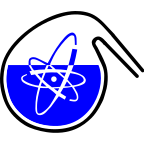Speaker
Description
Minor actinides in used nuclear fuel are responsible for much of its radiotoxicity and heat generation. Actinide(An)/Lanthanide(Ln) separation processes via selective complexation and solvent extraction by designed soft S- and N-donor ligands can take advantage of the slight differences in relative hardness of An(III) vs. Ln(III), leading to potentially selective separations. Furthermore, the presence of organic mercury in the alkaline high-level waste at the Savannah River Site has sparked interest in synthetic soft-donor ligands for Hg(II) and organic mercury separation, coordination, and extraction.
As part of our efforts in selective Hg(II) and Ln/An(III) coordination, soft-donor ligands containing thioamide and/or pyridine sites that are derived from o phenylenediamine or from dipicolinic acid, were synthesized and studied for complexation of Hg(II) and f-elements by structural and spectroscopic methods. These frameworks allowed for comparative studies between ligands that contain the C=O vs. the C=S group: For example, while the O-donor dipicolinamide was shown to bind Ln(III) by UV-Vis and NMR in acetonitrile, the S-donor dithiopicolinamide ligand did not show any binding towards Ln(III). Yet the same dithiopicolinamide was shown to extract Am(III) vs. Eu(III) selectively from acidic solutions. Hg(II) complexation studies by UV-Vis titrations showed binding in solution via the formation of a new UV-Vis absorbance at 279 nm, and selectivity in the presence of Ca(II). The X-ray structure for the dimeric Hg(II) complex shows each Hg(II) center bonded to two S donors from two distinct thioamide ligands and one pyridine N atom, thereby resulting in two tri-coordinated Hg centers.
Pyrazole ligands that contain varying substitution patterns showed remarkable differences in Ln(III) complexation and fluorescence sensing capabilities, which show some variation along the Ln(III) series. The role of ion-pairing and solvation in explaining these differences will be discussed.

